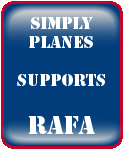No. 57 Squadron
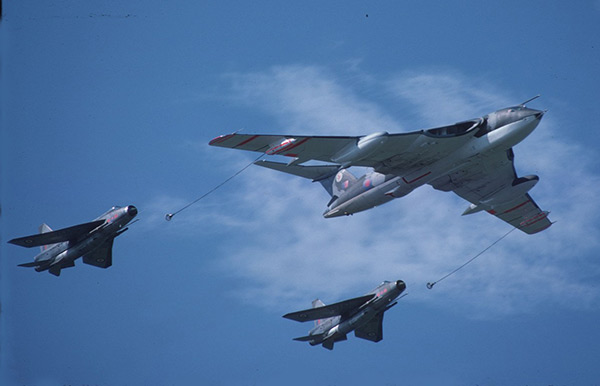
Victor K2 XH669 RAF 57 Squadron and two F6 Lightnings 5 Squadron, Abingdon 16th September 1978. Image courtesy of The Adrian M. Balch Collection
No. 57 squadron was formed on the 8th June 1916 at Copmanthorpe near York, from elements of No. 33 home defence squadron and soon departed to France flying in the role of fighter/reconnaissance role equipped with FE2ds.
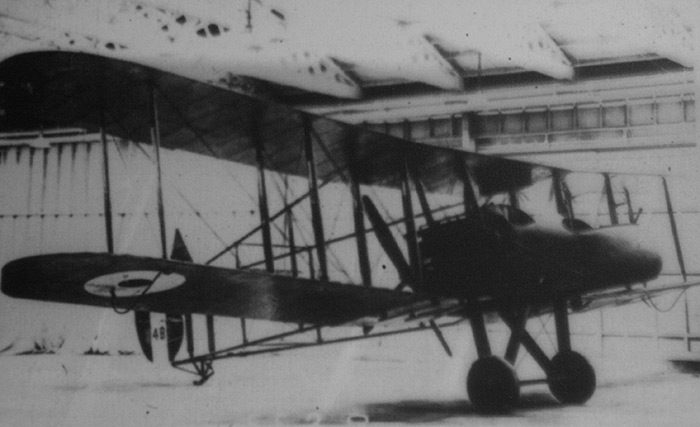
Fe2d in Hangar. Crown Copyright
In the spring of 1917 the squadron started to convert to the Airco DH.4 and, after training, moved to the Ypres sector and started long distance bombing, reconnaissance and photography.
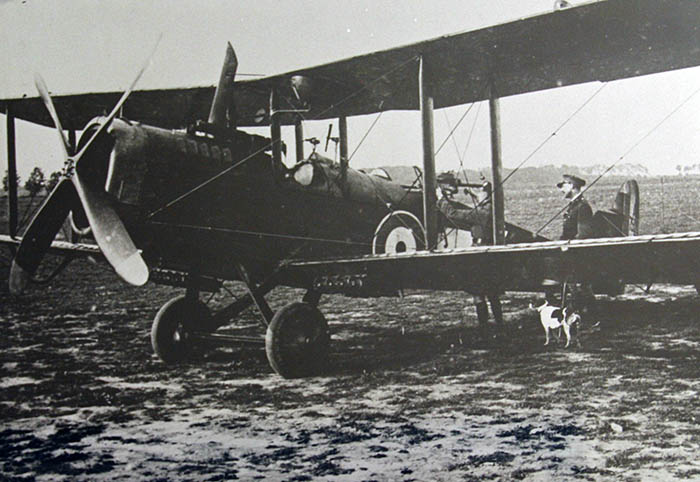
Airco DH.4. Crown Copyright
The squadron carried on these missions flying behind enemy lines, until November 1918. It suffered heavy casualties but was also very successful; having destroyed over one hundred and fifty enemy aircraft, dropped several hundred tons of bombs and flown numerous reconnaissance missions.
After November 1918 the squadron was used for mail shipping and converted to the DH.9A in February 1919. The squadron gave up its aircraft in July 1919, returned to England in August and was formally disbanded in December.

DH.9A. Crown Copyright
No. 57 squadron was reformed in 1931 at Netheravon with the Hawker Hart day bomber.
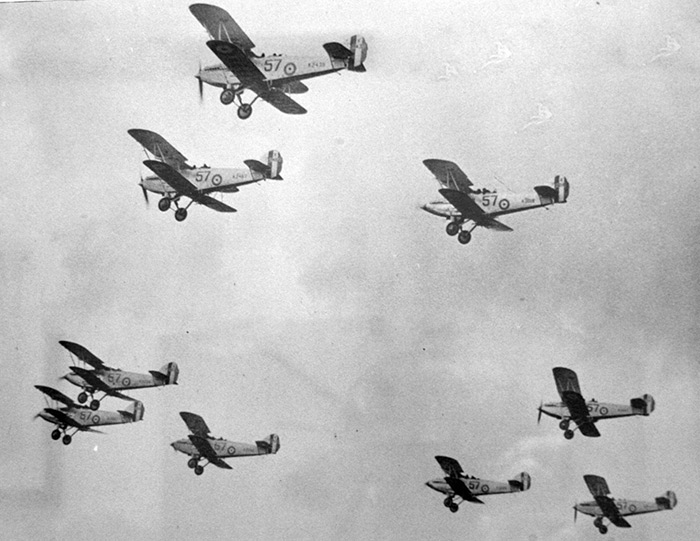
Hawker Harts. Crown Copyright
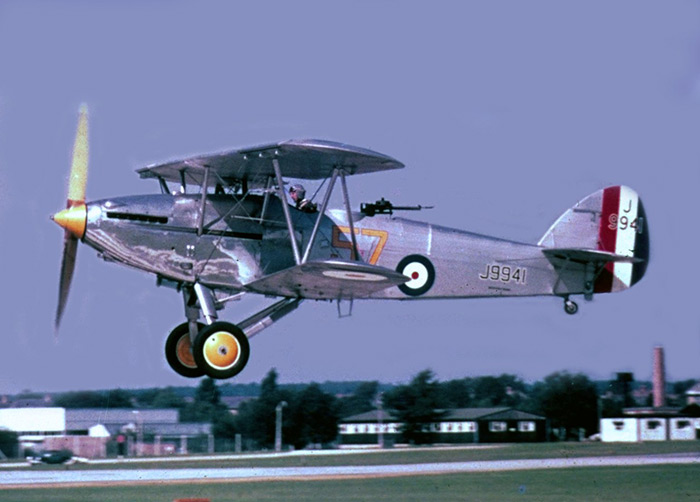
Hawker Hart J9941 G-ABMR Farnborough, September 1966. Image courtesy of The Adrian M. Balch Collection
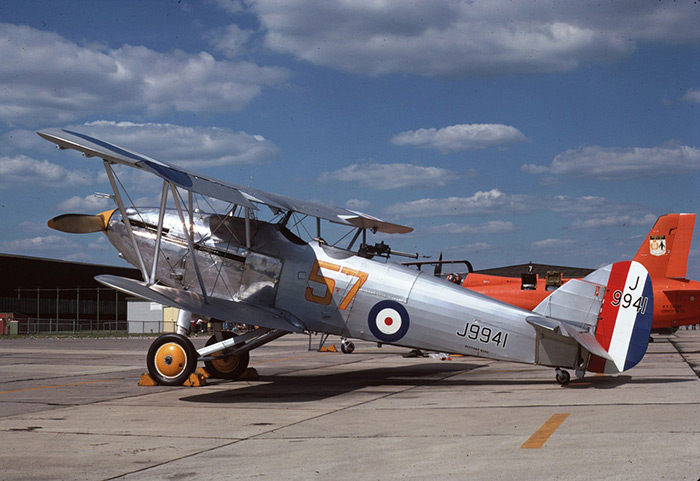
Hawker Hart J9941 G-ABMR Yeovilton, 17th July 1971. Image courtesy of The Adrian M. Balch Collection
It flew this type until May 1936 when it re-equipped with the Hawker Hind.
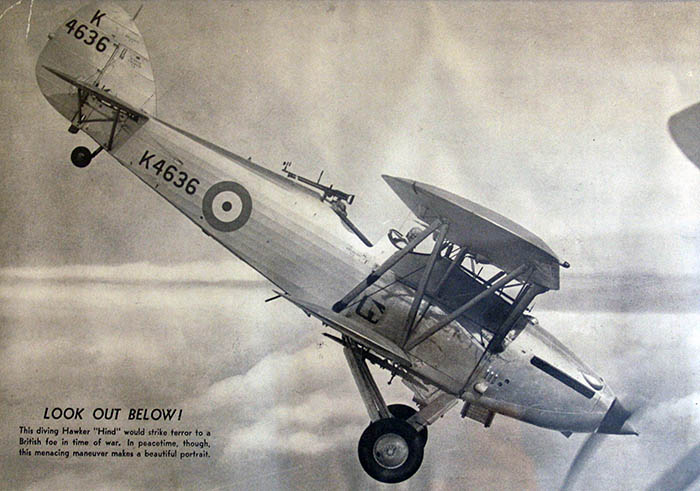
Hawker Hind K4636, a similar aircraft to the ones used by 57 Squadron. Crown Copyright
Two years later it was further re-equipped with the Bristol Blenheim I and in September 1939 became part of the British Expeditionary Force in France.
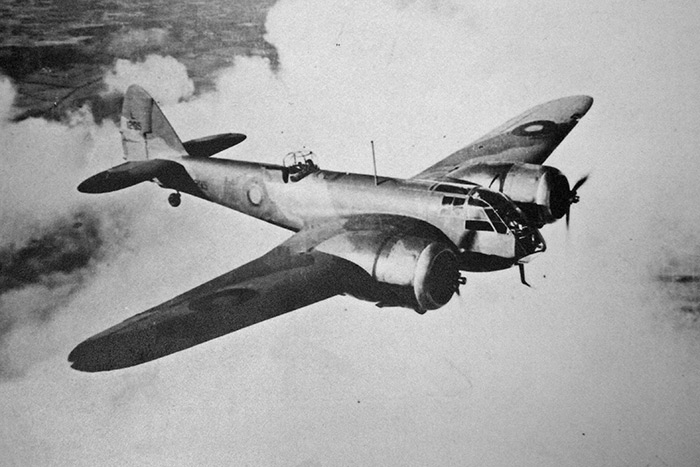
Blenheim I. Crown Copyright
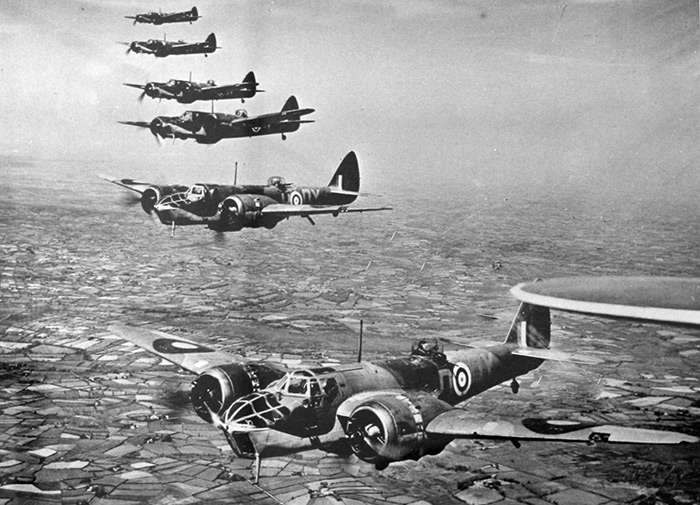
Blenheim IVs. Crown Copyright
Re-equipment with the Blenheim IV came shortly before the Battle of France.
Following the evacuation of the BEF the squadron was briefly based at Wyton and Gatwick before moving to northern Scotland. In November 1940 the squadron moved to Feltwell, after another brief stay at Wyton, and re-equipped with the Wellington Ic.

Wellington BII W5379, a similar aircraft to the ones used by 57 Squadron. Crown Copyright
After also operating the Wellington II and III, the squadron adopted the Lancaster I/III and moved to Scampton in September 1942. A move to East Kirkby a year later was the squadron’s last until the end of the war in Europe. Conversion to the Lincoln B2 in August 1945 was short-lived as the squadron disbanded on 25th November. However on the same day 103 Squadron at Elsham Wolds was renumbered as 57 Squadron.
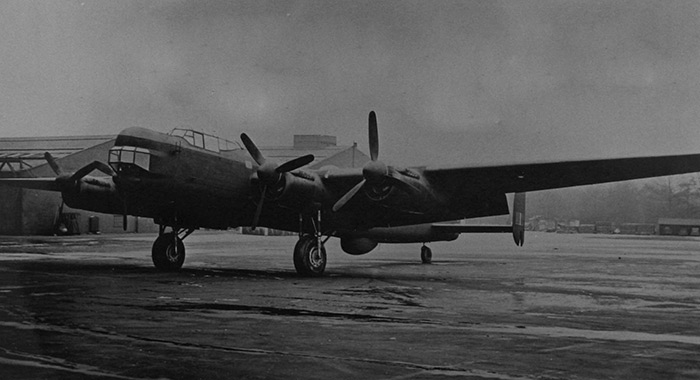
Lincoln. Crown Copyright
Again the squadron was equipped with the Lincoln B2, although it also retained some Lancasters for the first 6 months. For most of the Lincoln era the squadron was based at Waddington.
The RAF planned to equip all bomber squadrons with the Canberra B2 but the Lincoln became obsolete before sufficient Canberras could be produced. As an interim solution some B-29As were acquired on loan from surplus USAF stocks. These aircraft were designated the Washington B1, and 57 Squadron were re-equipped with them in April 1951.
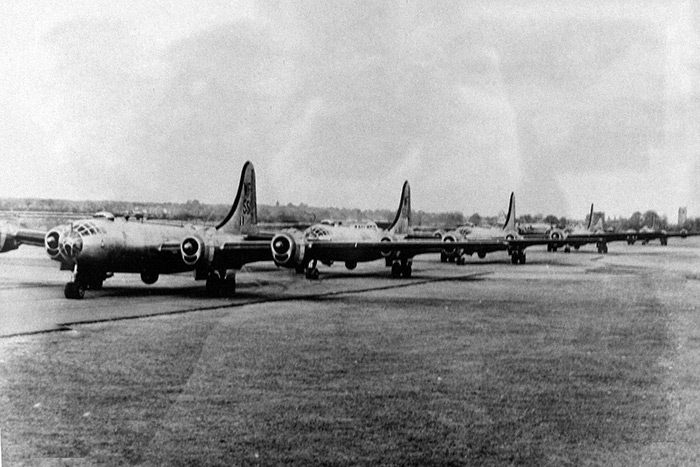
Washington B1s. Crown Copyright
The Washingtons were operated for 2 years before Canberras arrived.
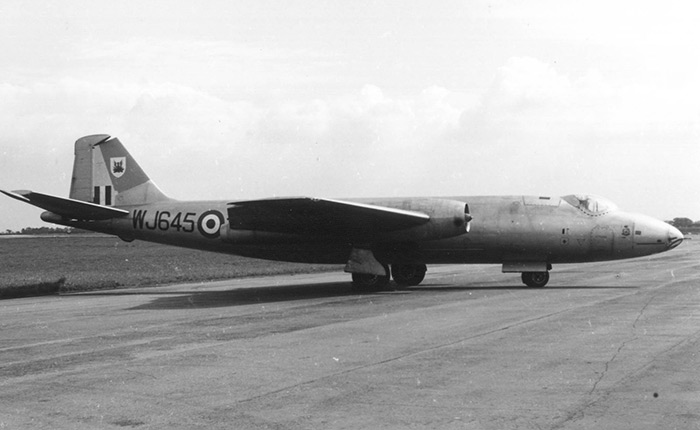
Canberra B2 WJ645. Image via Martyn Chorlton
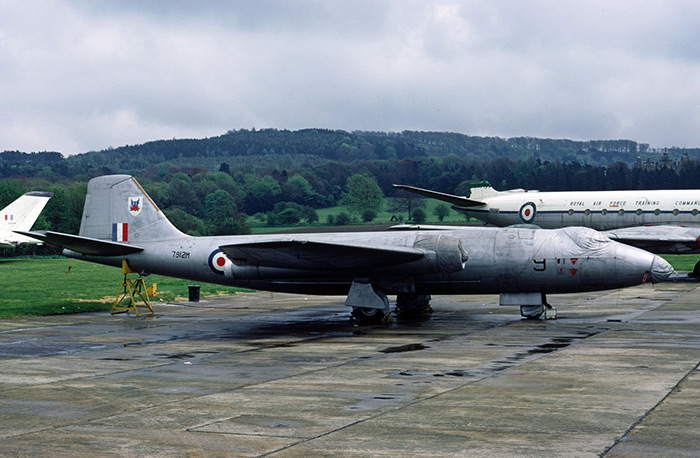
Canberra B2 WK131 7912M RAF 57 Squadron Halton, 7th May 1971. Image courtesy of The Adrian M. Balch Collection
During the Washington and Canberra years the squadron rotated between Waddington, Coningsby, Cottesmore and Honington moving almost every year.
On the 9th December 1957 the squadron disbanded once again but was to reform on the 1st January 1959 at Honington, flying the Handley Page Victor B1 as part of the V Force that provided the nuclear deterrent.
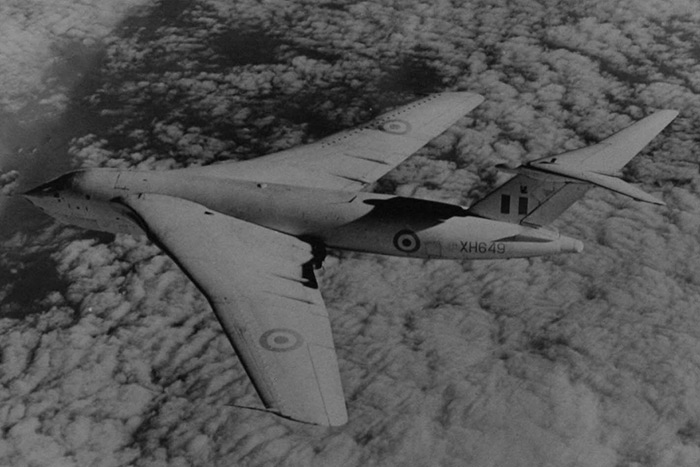
Victor B1 XH649 later served as a K1 with 57 Squadron. Crown Copyright
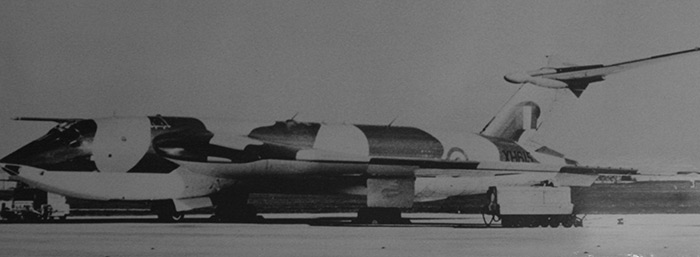
Victor B1 XH615 served briefly with 57 Squadron in 1964. Crown Copyright
After 7 years of stability at Honington, in December 1965 the squadron moved to Marham to operate the Victor K1 tankers that were being introduced to replace the Valiant.

Victor K.1A XH587 RAF 57 Squadron, Marham September 1966. Image courtesy of The Adrian M. Balch Collection
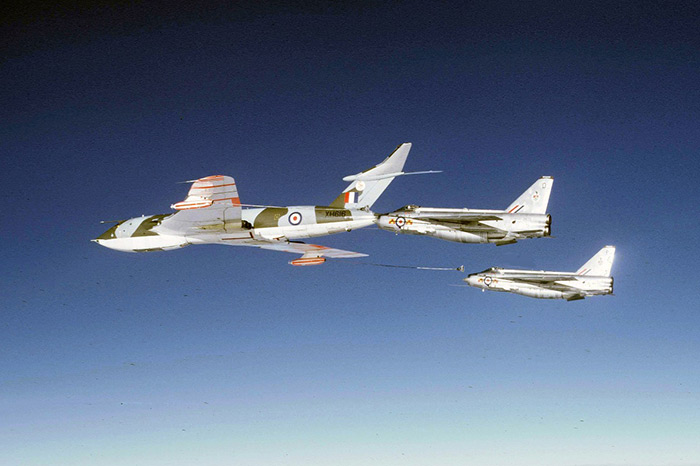
Victor K1A XH616 RAF 57 Squadron and two 92 Squadron F2A Lightnings over Germany, January 1972. Image courtesy of The Adrian M. Balch Collection
After 10 years operating the Victor K1 the first K2 tankers were delivered. Following a year during which the types operated side by side the squadron became a K2 only operator in May 1977.
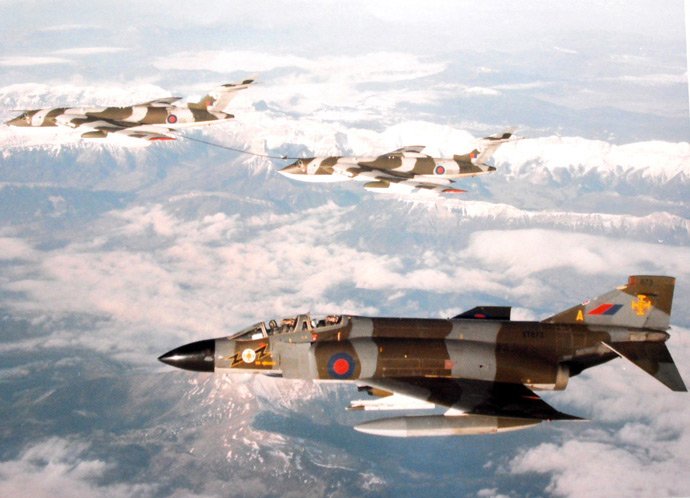
A pair of Victor K2s and a 111 Squadron Phantom. Image Crown Copyright
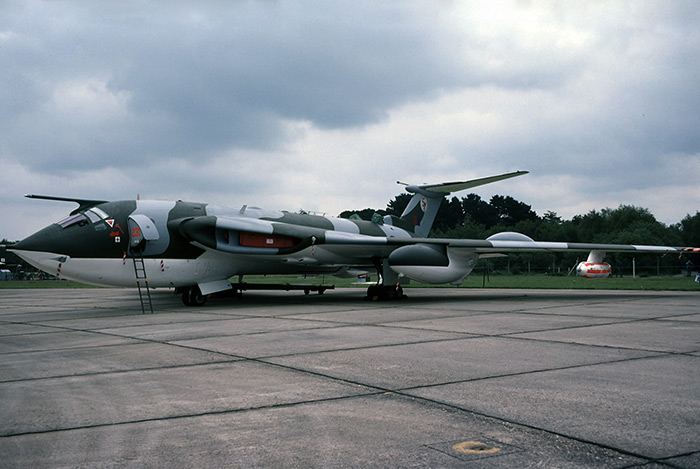
Victor K2 XH167 57 Squadron Greenham Common, June 1979. Image courtesy of Richard Andrews
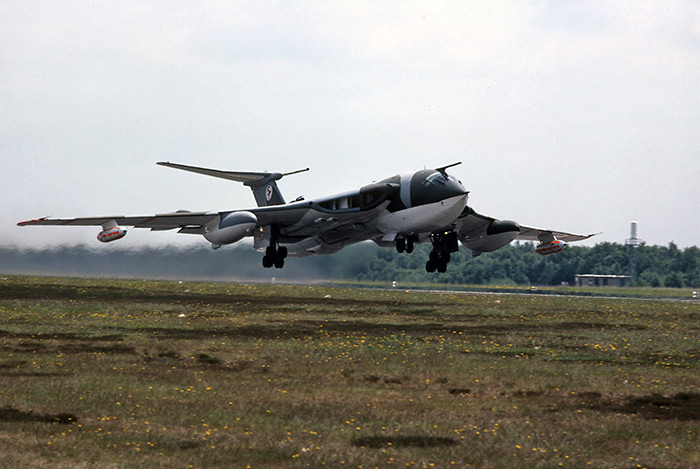
Victor K2 XL160 57 Squadron Greenham Common, July 1981. Image courtesy of Richard Andrews
In 1982 came the squadron’s most significant operational commitment since WWII. Argentina invaded the Falklands Islands and the UK response was to send a task force to the South Atlantic under Operation Corporate. Along with 55 Squadron, 57 Squadron deployed to Wideawake Airfield Ascension Island.
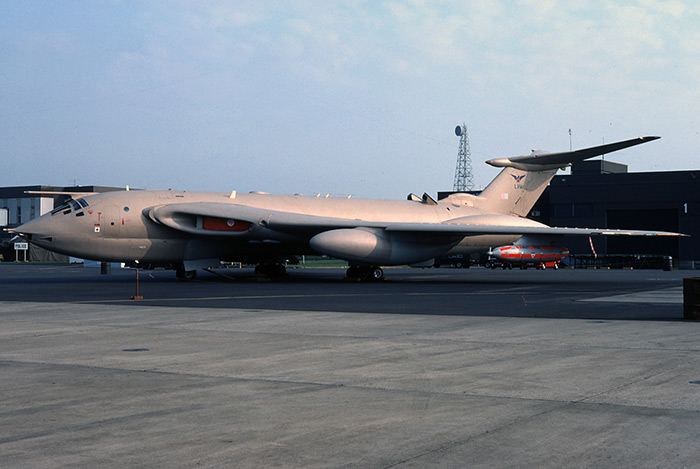
Victor K2 XH673 57 Squadron Mildenhall, June 1984. Image courtesy of Richard Andrews
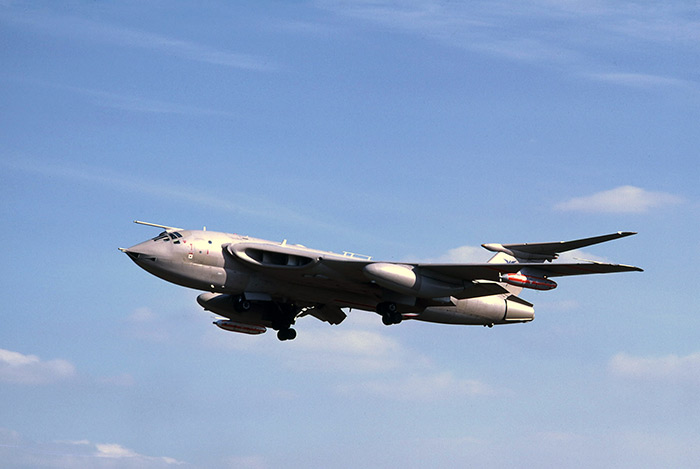
Victor K2 XL164 57 Squadron Fairford, July 1985. Image courtesy of Richard Andrews
There followed six weeks of intensive operations including support for the Black Buck bombing missions. With the recapture of the Falklands the emphasis of operations changed to support for the air bridge used to reinforce and re-supply the newly established garrison. The levels of activity in the South Atlantic meant that the remaining life in the Victor fleet was being consumed faster than originally expected. It was decided to concentrate the remaining aircraft in one squadron. As a result 57 Squadron disbanded on the 30th June 1986.
Although it was widely expected that the disbandment at Marham would be the end for 57 Squadron, a change of policy led to an unexpected resurrection. It was decided to assign reserve squadron status to the OCUs.
As a result, on 1st June 1992, 242 OCU at Lyneham, the Hercules OCU, became 57(R) Squadron. This role continued until 14th March 2002.
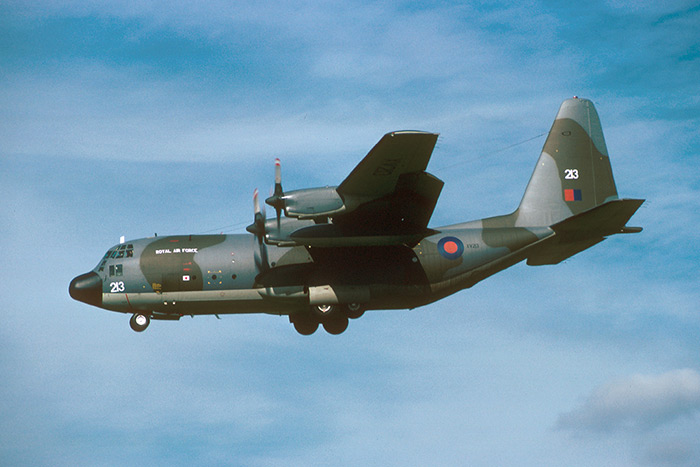
Hercules C1 XV213. Image courtesy of Don Gilham
On 1st October 2008 the squadron reformed as an elementary flying training squadron for RAF pilots, as part of 3FTS, based at Wyton and equipped with the Tutor T1.

Image courtesy of John Bradshaw

Image courtesy of John Bradshaw

Image courtesy of John Bradshaw
With the planned closure of Wyton to flying during 2015, the squadron moved to RAF Cranwell on 7th October 2014, transiting as a 9-ship formation.

Image courtesy of John Bradshaw

Image courtesy of John Bradshaw




